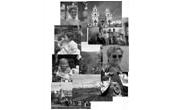 |
» |
|
|
 |
 |
|
|
Photo printing at home is becoming increasingly popular because of its advantages in convenience and control. Consumers consider a broad range of factors when they select digital photo printing systems, typically image quality, ease of use, speed, sizes of prints the printer can produce, compatibility with memory cards and digital cameras, and cost. While photo print cartridge yield is one component of cost, this information is clearly not the only—or most important—decision-making factor. However, yield information can be useful in helping consumers select the right photo printing system for their needs. It can also help them understand what to expect from their photo printing systems.
|
| |
|
 |
|
 |
|
|
Many factors affect yield and yield measurement, some unique to photo printing. Because different manufacturers use different yield measurement methodologies, it is difficult to fairly compare photo print cartridge yield across manufacturers' printing systems.
HP strongly supports industry yield standards. HP participated in, supported the development of, and adopted the ISO/IEC 19752 standard for toner cartridge yield for monochrome laser printers. HP is also an active participant in the development of inkjet and colour laser print cartridge yield standards. ISO has also begun work on the development of an inkjet photo yield standard. Until a true standard exists, photo yields comparisons will be difficult.
In the meantime, HP has developed a robust testing methodology for measuring photo print cartridge yield based on its digital photo printing expertise. The testing uses a suite of photo print samples that reflects typical consumer printing (see Figure 1). This article explains HP's photo yield methodology.

|

|
|
Photos in colour test suite
|
Photos in B&W test suite
|
|
|
|
Figure 1: Photo Suite --10 individual 10x15 photos
|
|
| |
|
 |
 |
Measuring Photo Print Cartridge Yield
|  |
 |
|
|
|
Print quality settings, end-of-life determination, print job size and environmental conditions all affect yield measurements. In addition, photo cartridge yields vary depending on the size of the photos printed, the contents of the images themselves and even the type of paper used. Photo yields also depend on the cartridges used, specifically, whether optional photo cartridges are used to enhance photo quality. (See sidebar titled "Printing photos: Cartridge options for desired image quality" for more information.)
|
| |
 |  |  |
|
 |
|
|
 |
|
 |
|
Photo Cartridge Yield: Only One Factor to Consider
HP recommends that consumers select a photo printing system based on their particular photo printing needs. Yield data can be helpful in selecting the right photo printing system. It can also be useful for planning when cartridges may need to be replaced or for estimating the number of cartridges to have on hand for large projects such as holiday greeting cards. Overall, however, cartridge yield is only one among many factors to consider for the best photo printing experience.
1 Yields may vary when different types of paper are used.
2 For appliance printers that print only 10x15 photos, photos are printed on 10x15 photo paper.
|
| |
|
|
